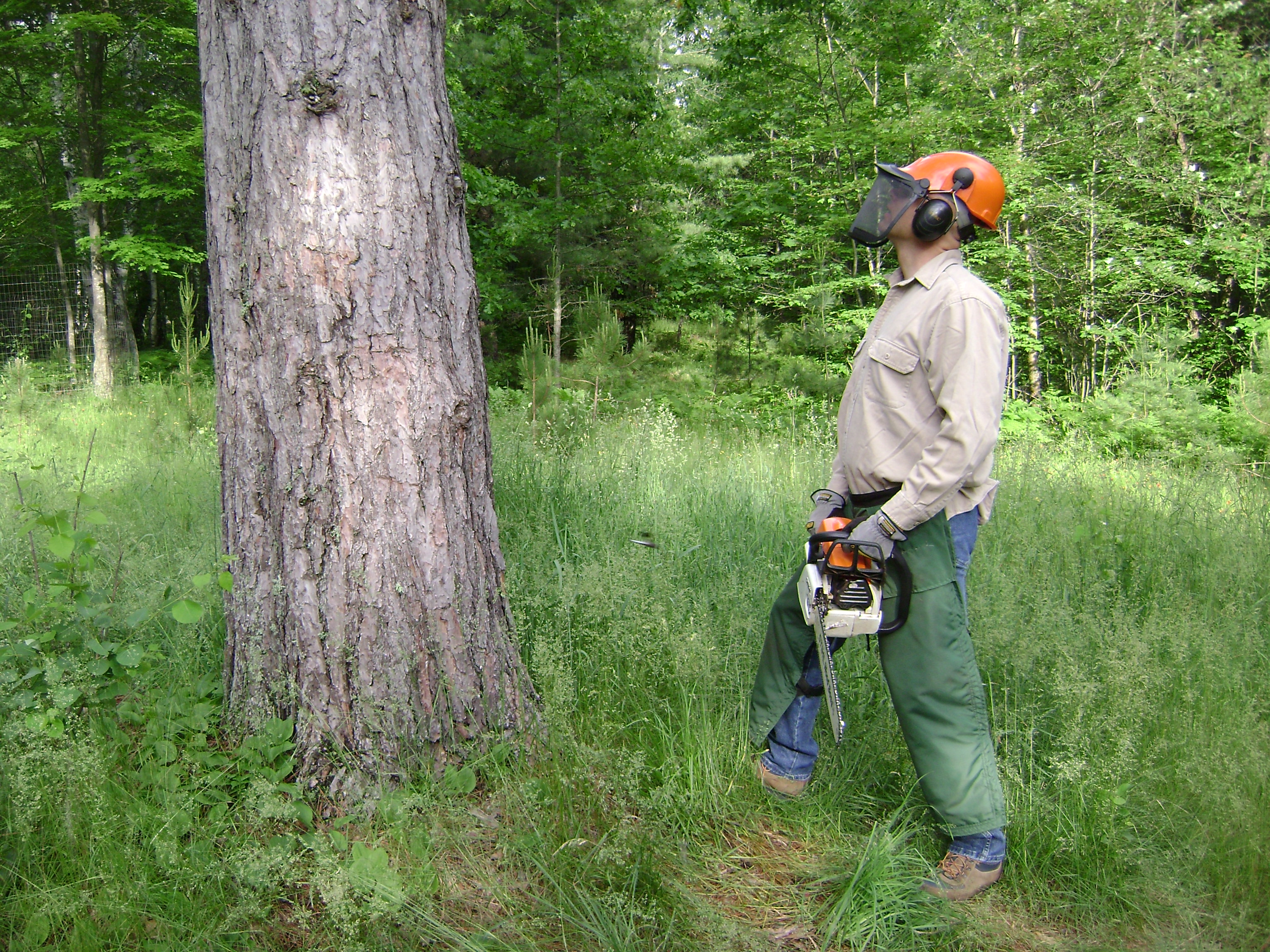Chainsaws are powerful tools that make the felling and processing of trees easy. We tend to forget how dangerous these tools can be if used improperly and without safety equipment. Take a moment to test your knowledge about chainsaws and their use. The answers are at the end.
1. About how many people are treated every year in emergency rooms for chainsaw injuries?
A. 24,000
B. 36,000
C. 103,000
D. 158,000
2. Which parts of the body are most commonly injured by a chainsaw?
A. Head
B. Feet
C. Legs
D. Hands
E. Legs and left hand/wrist
3. What is the most common cause of fatalities when using a chainsaw?
A. Poor technique for tree felling
B. Working too close to another chainsaw operator
C. Being struck from behind
D. A hang up (such as a large branch) falling on a chainsaw operator
4. When is it ok to work alone with a chainsaw?
A. If felling just one tree
B. If people are in the house when you are in the woods
C. If you have had expert training
D. If you have years of experience
E. Never
5. Which of these are essential personal protective equipment for operating a chainsaw?
A. Hard hat
B. Eye and ear protection
C. Gloves
D. Chainsaw chaps/pants
E. Chainsaw boots
F. All of the above
6. How far away from where you are putting fuel in your chainsaw should you be when starting it?
A. At least 5 feet
B. At least 10 feet
C. At least 15 feet
D. At least 20 feet
7. What is the best way to start a chainsaw?
A. Kneeling next to it on a level stretch of ground
B. Drop starting the chainsaw after it is warmed up
C. On the back of the truck
D. None of these
8. When should you engage the chain brake on your saw?
A. When starting the saw
B. During a pause in cutting
C. When moving to the next spot to cut or limb to cut
D. When setting down the saw
D. All of these
Answers:
- B. According to the Center for Disease Control, on average 36,000 people are treated per year in emergency rooms for chainsaw injuries.
- E. People report injuries to many different parts of their bodies, but the most common areas for injuries were to legs and to the left hand and wrist.
- D. It is very common for trees or branches to get hung up in other trees during felling, and these can fall at a later time striking chainsaw operators.
- E. Even the most experienced and trained chainsaw operator can experience problems or make mistakes, and these can be life threatening so never work alone in the woods.
- F. Always protect yourself as mistakes can be made even doing the simplest looking jobs. Check out this publication to learn more about personal protective equipment for chainsaw operators.
- B. Be at least 10 feet away from the fueling source to reduce the risk of starting a fire.
- A. With the saw sitting on cleared, level ground, place your right foot in the throttle guard, and kneel on your left knee. Then grasp the carrying handle with your left hand to hold the saw down and pull on the starting chord with your right hand. Watch this video for a demonstration.
- E. Whenever you are not actively cutting, you should engage the chain brake.
